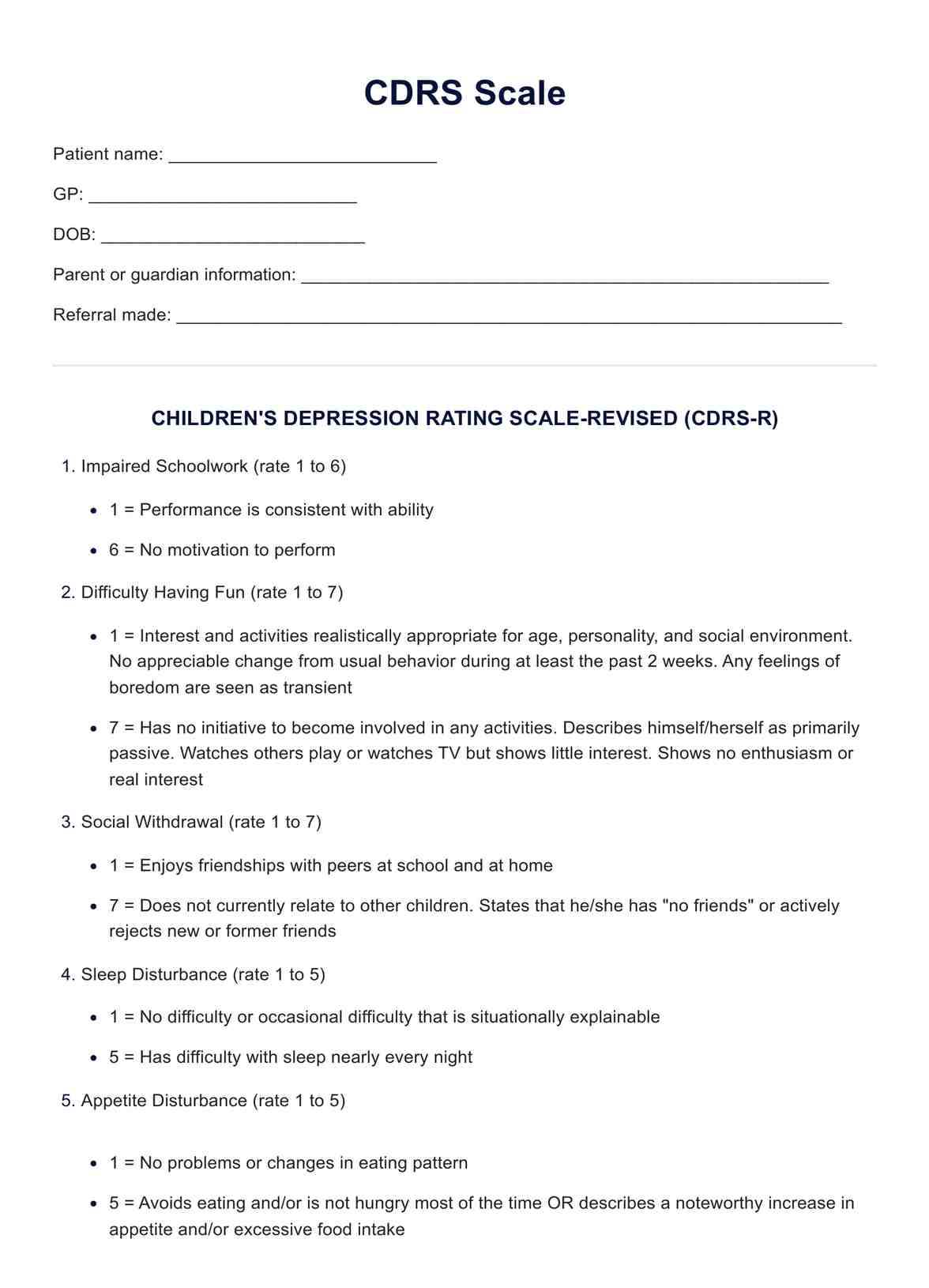Clinicians use the score to assess the severity of depressive symptoms, with higher scores generally indicating more significant symptomatology. The interpretation may involve categorizing the severity as mild, moderate, or severe, helping guide treatment decisions and interventions.

CDRS Scale
Comprehensive guide to interpreting Children's Depression Rating Scale (CDRS) scores, aiding in understanding and addressing childhood depression effectively.
CDRS Scale Template
Commonly asked questions
Clinicians use CDRS scores as a valuable tool to guide treatment decisions. For instance, a higher score may suggest the need for more intensive interventions, including therapy or, in some cases, medication. A decreasing score over time may indicate treatment effectiveness or remission, influencing decisions about the continuation or modification of treatment strategies.
While there isn't a fixed "normal" score, lower scores generally suggest fewer depressive symptoms. Clinicians compare individual scores to established norms for the child's age and demographic, considering factors like developmental stage. Understanding the typical range can provide reassurance or prompt further investigation if scores deviate significantly.
EHR and practice management software
Get started for free
*No credit card required
Free
$0/usd
Unlimited clients
Telehealth
1GB of storage
Client portal text
Automated billing and online payments











